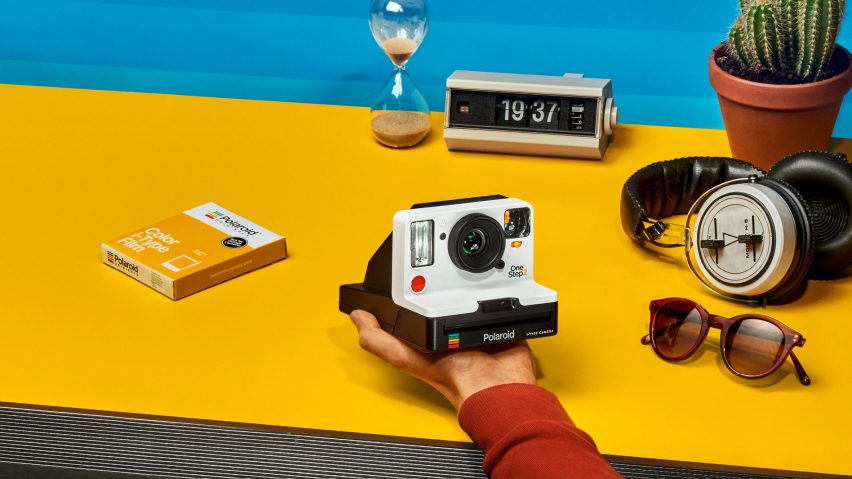An independent company dedicated to analogue instant photography has rebranded itself as Polaroid Originals, and launched its first new camera this month in tandem with Polaroid's 80th anniversary.
The Impossible Project continued to sell Polaroid products after the photography company went bust in 2008. Now renamed Polaroid Originals, it has no affiliation with the original company.
"Polaroid Originals isn't a new identity for Polaroid – it's a separate brand, like Adidas and Adidas Originals for example, where Polaroid Originals really focuses on analogue instant photography and the roots of the brand," Oskar Smolokowski, former CEO of Impossible Project and now CEO of Polaroid Originals.
To coincide with the brand's launch, Polaroid Originals has announced the release of a new analogue camera called the Polaroid OneStep 2 – a successor of the original Polaroid OneStep, launched 40 years ago.
The new product will feature the same point-and-shoot usability as the original but also include a self-timer, a built-in-flash and USB charging. A series of new generation film, with colour, black and white, and special editions, will accompany the camera.
"The original OneStep was the camera that made instant photography accessible and easy for everyone, and we've stayed true to that idea with the OneStep 2," Polaroid Originals creative director Danny Pemberton told Dezeen.
"The design process was both form and function led, and because the 1977 OneStep is one of the most iconic cameras ever created, a large part of the aesthetic objective has simply been to pay tribute to this icon while updating it for 2017."
To coincide with the launch of the OneStep 2, the company has undergone a total rebranding. The new packaging and identity has been designed as a return to the values and aesthetics of the original Polaroid.
"We experimented with hundreds of iterations of the design, particularly around the white frame and the rainbow – perhaps the most recognisable symbols of Polaroid's visual legacy," Pemberton said. "The later was introduced by Paul Giambarba in the 1960s, and in my opinion, his designs are perfection. To try and tweak or improve them would be impossible, both aesthetically and conceptually."
Instead, Pemberton chose to focus on the original "product identity systems", the adaption of a visual code to fit every individual product.
"If in the 1970s you saw a set of distinctive rainbow colours arranged in a diamond, you knew immediately that you were looking at something to do with Polaroid's SX-70 line," he said. "If those same colours were arranged in a square, you were looking at Type 88, and so on. We’ve tried to take this thinking through to Polaroid Originals."
The result is a graphic identity that covers a broad range of products, with the flexibility to know exactly which type of product you are looking at.
Each format film is represented by a corresponding colour: blue for 600, red for SX-70, and so on. "This colour acts as a wayfinder for the customer, from the colour film packaging, the brand photography, right to the entire digital experience online," Pemberton said.
Two-tone camera illustrations adorn the promotional material, which again pay tribute to Giambarba's 1960s visuals. For the typeface, Pemberton chose FF Real – a "grotesque" font by Erik Spiekermann that includes features like an old-fashioned, double-storey "g" and hooked "7".
Polaroid was founded in 1937 by Edwin Land and became iconic for its instant photography products, but was declared bankrupt in 2008. Although the company no longer sells analogue instant film products, Polaroid became one of the first household names to launch a home 3D printer range last year.
Polaroid Originals intends to revive the brand's cultural status. "Polaroid pictures may no longer be at the cutting edge of tech, but underneath it all, we're still the same human beings wanting to connect with each other in real life," Pemberton said. "In this digital era, it's more important than ever that we have access to products that encourage analogue, human interactions in the real world."

